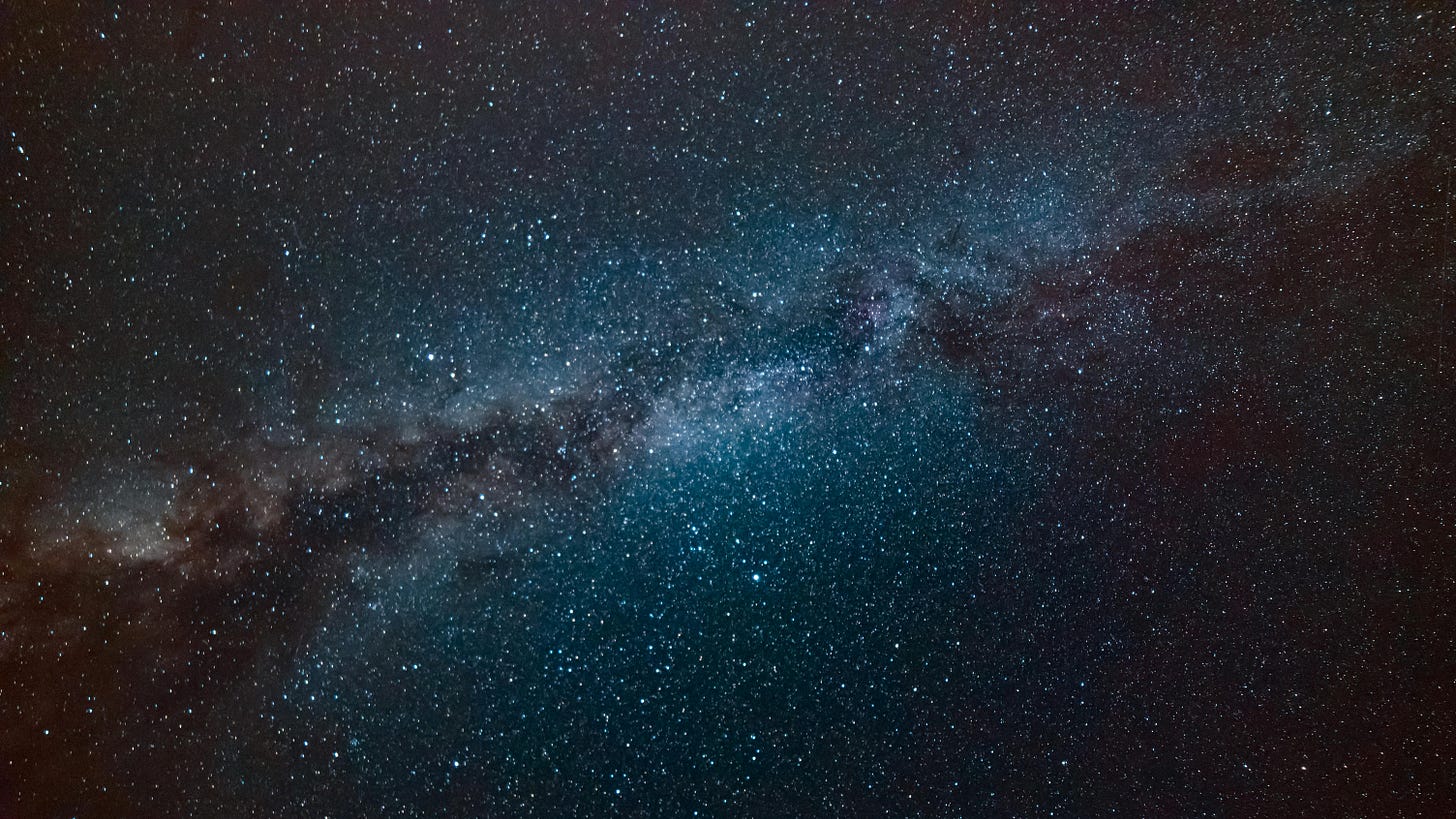Scholar Explores Origins of Life in Campus Lecture
The Wisconsin Center for Origins Research seeks to advance our understanding of life in the universe
Dr. Jim Cleaves, professor and chair of the Department of Chemistry at Howard University, gave a lecture on campus last week, sponsored by the Wisconsin Center for Origins Research, to discuss current theories on the formation of life and their applications beyond Earth.
Theories about life and its origins have changed over time. The question of how Earth evolved from a desolate planet to one teeming with biodiversity opens many avenues for exploration. For Western culture, this question was initially answered by the Book of Genesis.
In the early Renaissance, inquiry began to identify where life came from. People were familiar with the concept of reproduction: two parent animals are needed to lay eggs for children to hatch. If we scale back to the beginning of life, there could not have been two animals that created a child, since they would also require parents, showing these parent animals weren’t the first living organisms. This paradox led to the idea of spontaneous generation.
It was believed some organisms could appear from their environment. For example, if rotten bread was left out, maggots would appear. An experiment by Jan Baptiste van Helmont tested this theory. He put dirty laundry in a barrel with grain, and soon, mice appeared, suggesting spontaneous generation was true. However, controlled experiments challenged this theory. Francesco Redi initially believed maggots were spontaneously generated. He made a jar with rotten meat sealed with a lid. No maggots appeared. Critics noted that there was no airflow, so he replaced the lid with a mesh. Flies laid eggs on the mesh, proving nothing spawned inside the jar. This was a blow to spontaneous generation.
Later, Antoni van Leeuwenhoek improved the microscope and used it to observe pond water, discovering a world of microbes. He believed these organisms were too small to lay eggs (later proven correct, as bacteria use asexual reproduction).
Meanwhile, Friedrich Wohler took two inorganic compounds and made urea, previously believed to be only found in urine. This showed you can synthesize biological compounds outside the human body, proving a non-biological way to make biological compounds.
Around the same time, Robert Chambers wrote Vestiges of the Natural History of Creation, a popular book read by Prince Albert and Abraham Lincoln. It included a prototype of evolution and a phylogenetic tree, where species branch off through evolving traits. He was not credited with evolution, as it was only a prototype. Chambers wrote anonymously, fearing trouble since it collided with creationism.
Charles Darwin read the book and explored evolution and natural selection, writing On the Origin of Species. He believed the phylogenetic tree had a root, a first species where all biodiversity branched off. He was criticized at the time for omitting God.
The debate about spontaneous generation continued in France. Louis Pasteur ended this with a swan neck flask. The curved flask let air enter, but dust and micro-organisms were stuck on the “S” curve. The flask kept nutrient-filled broth sterile. No organism spawned. When he tipped the flask to let trapped micro-organisms enter, they multiplied within the broth. This disproved spontaneous generation, Pasteur claiming: “Never will the doctrine of spontaneous generation recover from this mortal blow of this simple experiment.” Yet, we are here, so life must have emerged somewhere.
Perceptions of Earth’s age changed. Initially, the Bible suggested Earth was young. Radioactive decay shows Earth is about 4.5 billion years old, allowing time for the environment and organisms to develop.
Alexander Oparin and J.B.S Haldane hypothesized that early life-forms were heterotrophic, utilizing pre-formed nutrients in Earth’s environment. Carl Woese constructed a phylogenetic tree where LUCA, the Last Universal Common Ancestor, radiated into bacteria, archaea, and eukarya.
4.4 billion years ago, Earth cooled enough to have liquid water, and 3.5 billion years ago saw the origin of life. This raised the question: how long does it take for life to develop? It’s difficult to trace early Earth conditions, since tectonic plates are recycled. However, simplistic models of cells and early Earth can be produced. The chemoton represented an abstract model for the unit of life.
The source of organic compounds on early Earth was speculated to be the atmosphere, extra-terrestrial, or geothermal. The atmosphere has energy. Lightning and electromagnetic radiation help break and rebuild atmospheric molecules into organic compounds. Extraterrestrial comets, meteors, and asteroids carry organic compounds. Geothermal volcanoes at the ocean bottom heat cold water, adding nutrients that float to the surface.
The Miller-Urey experiment used a sealed container with boiling liquid water to show evaporation and a condenser for condensation, with a mix of gases and electrodes to simulate lightning. This mimicked early Earth and produced amino acids. The reaction mechanism was called the Strecker synthesis. Hydrogen cyanide in a basic environment yielded purines.
Autocatalysis reactions, where products act as catalysts, explained the rapid development of organic molecules, allowing organic compounds to be produced quickly.
If the origin of life was easy on Earth, why hasn’t it happened elsewhere? Frank Drake created an equation considering star formation, the fraction that could support life, and the probability that intelligent life avoids self-destruction.
In 1996, no planets were identified beyond our solar system. Now, there are over 6000. We don’t know if life’s formation is easy, and we can’t detect distant life. Space is vast, with our galaxy, the Milky Way, spanning 100,000 light-years. Our fastest spacecraft, Voyager 1, travels at 1/18,000 of the speed of light, taking 1.8 billion years to cross the galaxy.
We don’t know if the origin of life is easy. We don’t know what’s beyond. However, we know how organic compounds form, what makes a cell, and what early Earth’s environment was like. As we investigate the origin of life, we hope for a breakthrough.




